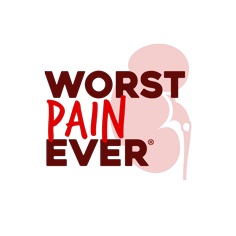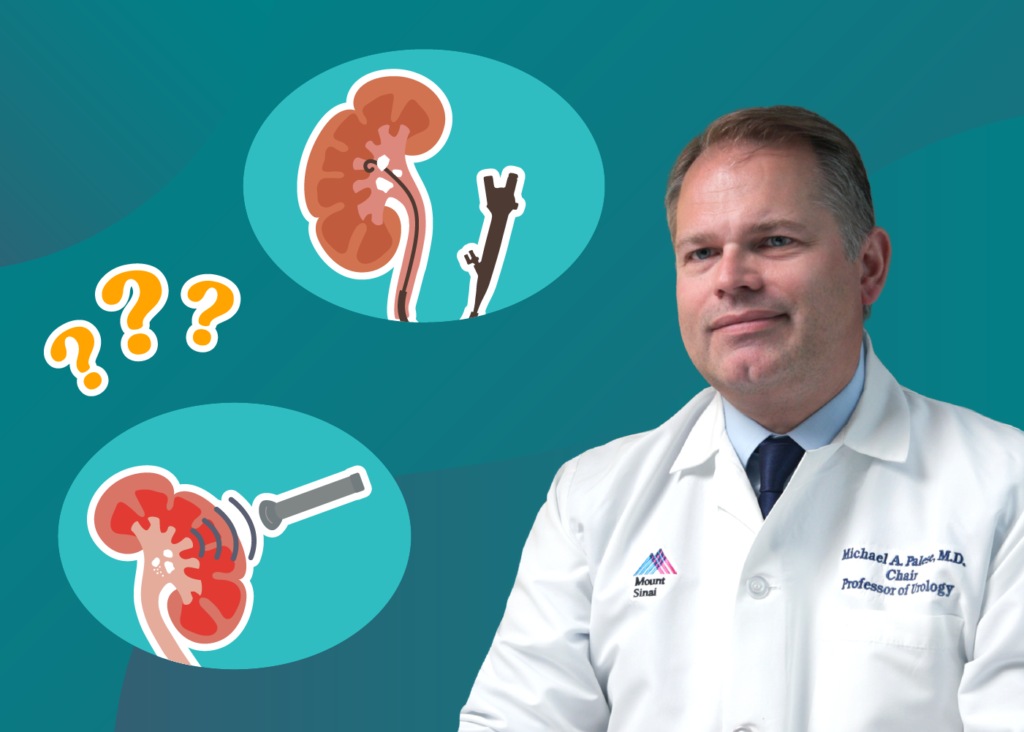Heard of ESWL and URS, but have no idea what really happens during these procedures? Dr. Michael Palese, a leading authority in the research and treatment of kidney diseases, walks us through the main differences between ESWL and URS.
ESWL – What’s that?
ESWL (extracorporeal shock wave lithotripsy) is a non-invasive procedure that doesn’t require any incision. It only takes 20 minutes to complete and works approximately 75% of the time. Some factors that determine how well your stone breaks up include its composition and location in your urinary system.
Why did my doctor recommend ESWL?
Well, that’s probably because your kidney stones are small! We typically do not use ESWL for stones larger than 2cm because unfavorable situations could occur. Some examples include a stone getting stuck in your ureter, a blockage or stones piling up in the ureter and kidney.
If you undergo ESWL to remove your large stones, this can lead to very painful situations that require more surgeries. To know if you’re a suitable candidate for ESWL, do ask your urologist beforehand.
What about URS?
URS is an effective, minimally invasive procedure that requires only same-day surgery. Just like ESWL, it does not require any incision and patients will be able to undergo the procedure with minimal anesthesia.
Our lasers have evolved in recent years and are now more efficient in breaking up stones. In general, most complex stones of different sizes can be treated with URS.
I heard that I need a stent after URS. Is that true?
Sometimes!
As daunting as it may sound, patients typically tolerate stents very well. Stents play a big role in helping you pass out any remaining stone or debris from your body. They are generally left inside your body for one to two weeks and help reduce any swelling.
You can get a self-removal stent, where you can take it out on your own. Alternatively, you could head back to your urologist’s office to have it removed.
My stones are too big for ESWL and URS… What now?
For certain patients, large stones may encompass the entire kidney. In such cases, we may use a different technology known as percutaneous nephrolithotomy (PCNL) or robotic pyelolithotomy. These procedures require an incision to the kidney itself to remove the large stone but are the most appropriate and safe for big stones.
Out of curiosity, what’s the most interesting procedure you’ve done?
Recently, I treated a patient that frequently experienced flank pain. He had seen multiple physicians – an orthopedic surgeon, a neurologist and a chiropractor. He eventually discovered a stone in his left ureter and kidney, after getting an X-ray requested by his primary care doctor. When he came to me, a CAT scan showed that his kidney had a significant blockage, so we performed URS to remove the stone and placed a stent. The patient recovered very nicely! When he came back to my office, he was dumbfounded that the back pain he suffered from for over 10 years was completely gone after undergoing a 2-hour procedure.
This interview has been edited for length and clarity.
Dr. Palese is the Chairman of Urology for Mount Sinai Downtown and Mount Sinai Beth Israel in New York. He specializes in complex kidney stone disease using endourology, laparoscopy, laser surgery and robotics surgery.





